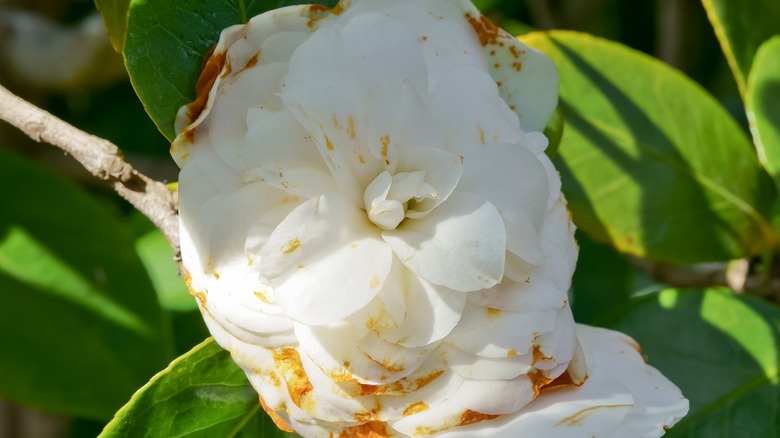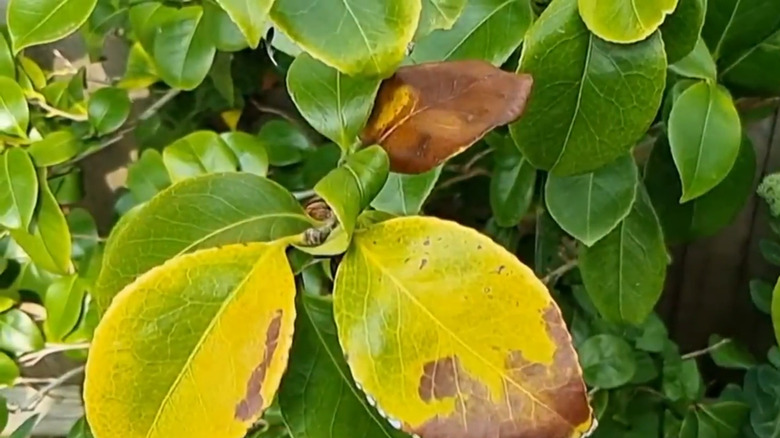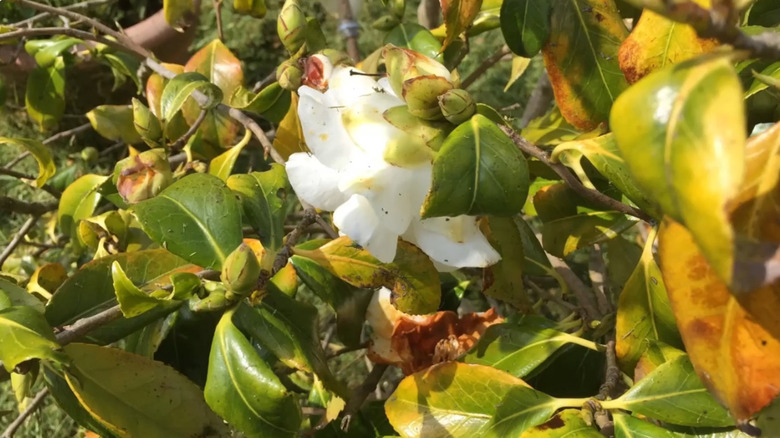Telltale Signs Your Camellia Tree Is Dying (& What To Do About It)
We may receive a commission on purchases made from links.
It can be heartbreaking to see your once-gorgeous camellia tree (Camellia japonica, Camellia reticulata, Camellia sasanqua) begin to wither. If the leaves on your camellia tree are limp and wilting, or perhaps the leaves or flowers are turning brown or black, it's a sign of an unhealthy tree. You may have followed all the right tips for how to grow and take care of a camellia plant, but often it's nothing you did wrong. The most likely cause is flower blight, leaf blight, or root rot.
Loved by Southern gardeners, camellias are known for their versatility and beautiful flowers. Varieties of this popular evergreen tree grow well from zones 6-9 or 10, and camellias have two blooming periods a year: late winter to early spring and late fall to early winter. The last thing you want is your lovely camellias dying. Since camellia tree diseases can be hard to cure, applying proper preventative measures can help keep your trees beautiful for years to come.
What to do about root rot in camellias
First, you'll want to consider root rot, most commonly caused by the fungus Phytophthora cinnamomi. This disease is one of the most terrifying for gardeners—its scientific name literally means 'plant destroyer,' and it may already be lurking in your soil. Root rot thrives in areas with standing water and warm climates, making proper drainage crucial for camellia trees. Early warning signs include wilting or yellowing leaves, and flower buds that either fail to open properly or fall off prematurely. Since it's so serious, it's important to know what root rot is and how to deal with it.
As Benjamin Franklin once said: "An ounce of prevention is worth a pound of cure." This holds especially true for root rot, as once it takes hold of your camellia tree, there's no surefire cure. Trees are most vulnerable to diseases like root rot when first planted. To prevent root rot, consider replacing your soil with a sanitary mix such as white builders' sand and apply preventative treatments of a fungicide such as Bonide Mancozeb Flowable with Zinc Fungicide, available on Amazon for $31.99 per 16 oz. Be sure to follow the package directions. These steps can help prevent infection. If you suspect root rot, uncover some of your camellia tree roots, and check for reddening. A healthy root should be white. If your plants are infected, they need to be destroyed, and the top layer of soil replaced to avoid future infections.
What to do about camellia leaf or flower blight
If the roots appear healthy, the next culprit to consider is camellia leaf or flower blight. This disease is often marked by brown spots on the flowers or leaves. While small brown spots along the edges may simply be sun or wind damage, larger spots suggest a more serious underlying issue. Camellia flower blight, caused by the fungus Ciborinia camelliae, can kill flowers within 24 hours. Leaf blight, on the other hand, is caused by the fungi Monochaetia karstenii. This fungi thrives on wet leaves, leading to discoloration and tiny black fungal spots. If left untreated, the blight will cause the leaves to wither and fall off.
If you suspect blight, you'll want to snip away all infected parts of your camellia tree — leaves or blooms — and get rid of them. It's also a good idea to rake up any pieces below the tree and start over with fresh mulch. The wind can carry blight over a mile away, so you'll want to protect any surrounding trees as well. A fungicide such as Southern Ag Liquid Copper Fungicide, available on Amazon for $21.59 per 32 oz, can help control the disease and keep it from spreading to other trees in the area. Following these tips can help keep your plants and soil disease-free.


